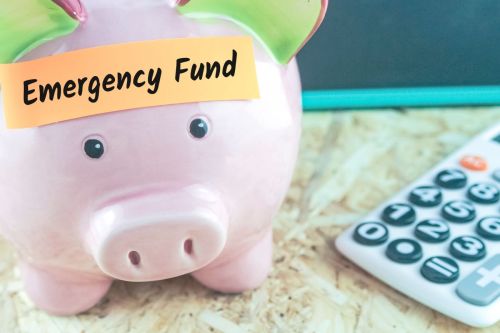A credit card can be a powerful tool and, like all powerful tools, should be handled with care. No one gives a novice a chainsaw and expects them to just figure it out. That same thinking applies to your teens’ first credit card. Good spending choices come with practice and a little education. When armed with the right information on using credit cards, your teens should be better able to establish healthy spending habits that last into adulthood.
Here, we break down credit limits, interest rates, fees, and credit card debt. That way, parents can help teens use a credit card responsibly. After reading this article, you should feel confident about chatting with your tweens and teens about what a credit card is and how it works.
Key takeaways
- In order to obtain a credit card, a bank first approves a credit application and agrees to credit the cardholder, issuing them a card with a spending limit.
- When you use a credit card, you’re borrowing money from a financial institution that will need to be paid back.
- When a credit card balance isn’t paid, the cardholder gets charged interest.
- Unpaid credit card bills can negatively affect your credit score.
- To apply for a credit card, you need to reach the age of majority.
- Teens can avoid temptation by leaving credit cards at home when hitting the mall and by opting not to store card numbers on electronic devices.
What is a credit card?
The easiest way to understand a credit card is to compare it with a debit card. While they may look the same, how they work is dramatically different. When you make a purchase with a debit card, you’re spending money that’s already earned and in your bank account.
A bank will likely set limits on your card for daily use—for example, how much cash can be withdrawn from an ATM or how much can be spent on in-store or online purchases. However, the overall (as opposed to daily) limit on a debit card is tied to the amount of money you have in your account.
But with a credit card, you are borrowing money from a financial institution. In order to obtain a credit card, a bank first approves a credit application and agrees to credit the cardholder, issuing them a card linked to a specific spending limit.
The credit card company expects to be paid back within a certain time period (also sometimes referred to as a “grace period”), usually a minimum of 21 days. The longer the cardholder takes to pay off the balance on a credit card, the more interest they pay on that loaned money. (We’ll talk more about interest later.)
Read more about how to explain credit cards to a child
How does a credit card work?
After applying and being approved for a credit card, a cardholder can make in-person and online purchases with their card. And credit cards have some advantages that debit cards don’t. For example, hotels, car rental companies, and even certain apps require users to have a credit card as a kind of insurance policy to show that there is a method of being able to pay the tab.
What is a credit limit?
Credit limits are typically set according to a person’s credit history, which is a track record of their credit-spending and payback habits. If you consistently pay your credit card bills on time, a bank may, over time, increase your spending limit. Someone applying for their first credit card—like a teen—probably won’t have a credit history, so the limit on the credit card can be as low as $500.
How does credit card interest work?
Three words: annual percentage rate (APR). All financial loan products charge interest, but the interest rate on a student line of credit, for example, is much lower than the interest rate on a credit card. Credit cards are more convenient to use and are accepted in most locations, but cardholders pay for this flexibility and ease. The APR on most Canadian credit cards is 19.99 per cent, but it can be even higher. Be sure to factor this in when you’re choosing a new card.
Here’s how credit card interest works when you make a purchase: Imagine the latest version of the best video game of all time has just dropped. It’s $100 and, deciding it’s a need instead of a want, you charge it to your credit card. Now you have two choices:
Pay your credit card bill completely
When the bill comes, you pay it right away and in full. You move $100 from your chequing or savings account to cover your entire credit card balance. In the end, you paid $100 for the game.
Pay less than the full balance
Your monthly credit card bill arrives in your email inbox or pops up on your banking app, but you don’t have that $100. Instead, you pay the minimum payment amount stated on the bill (let’s say $10), the rest of the balance ($90) carries forward, and interest is charged on the unpaid balance.
At the average APR of 19 per cent, the monthly amount of interest you’d pay on top of the balance of $90 would be around $1.43. Not too bad, right? The next month, if you still pay only the minimum (still using $10 as our example), your balance is $81.42 and another month’s worth of interest is charged—this time it would be $1.29.
After six months of paying only the minimum payment, you still owe $45.63 on that game, and the total amount of interest you’ve paid is $6.47. In the end, it would take you 11 months to pay for the game and the total cost would be $107.88. That’s money that could have gone into a savings account—or toward a pizza night.
When you pay your credit card bills in full each month, you avoid paying interest. All it takes is a little planning (will you have the money to cover your bill when it comes?) and consideration (assessing if each purchase is a need versus a want) before wielding that powerful piece of plastic.
What is a cash advance?
Like debit cards, credit cards can be used at an ATM to take out cash. Taking cash out at an ATM with your credit card is called a cash advance. However, unlike with a debit card, when you take out cash with a credit card, the clock on that debt starts ticking right away. And not only is the interest rate usually higher than your regular purchase APR (typically 20–23 per cent), there’s no grace period when you can pay off your balance before interest starts adding up.
On top of this, there can also be a fee for taking out the cash. What’s the bottom line? Cash advances are EX-PEN-SIVE! And you’ve got better things to do with your hard-earned money, don’t you?
Pro tip: Only take out a cash advance in an emergency.
Read more about how does interest work.

What is credit card debt?
There’s a reason the phrase “drowning in debt” pops up when people talk about money problems: It perfectly describes what it feels like to have accumulated so much credit card debt that you’re barely keeping your head above water financially.
When a cardholder struggles to cover the minimum payment required each month, they don’t even make a dent on the principal balance (the amount charged to the card for the original purchase).
These kinds of debt might seem like a long way off from that $100 video game and $7.72 interest charge, but if you make bigger purchases on your credit card (think a second-hand car, vacation, or new furniture) or a bunch of smaller ones, the balance adds up fast—and interest charges and monthly bills get much, much bigger. That’s why practising with small purchases, developing smart spending habits, and making a personal budget are super important.
Unpaid credit card bills can affect your credit score. This number is an important factor that determines who will lend you money—and how much—in the future. Down the road, a bad credit score might make it difficult to get things you want, like a car loan, cell phone, or even a job.
Learn more about what is debt explained for kids.
Is there a fee for credit cards?
In addition to interest, some credit cards will charge you fees for using them in certain ways (like that hefty cash-advance fee mentioned above). There are a few types of fees your teen needs to know about so they can either avoid them or plan ahead for extra costs.
Annual fee
Annual fees are pretty straightforward. They’re exactly what they sound like: a fixed amount paid every year for using a card. Some cards have no annual fees, some have low fees, and others (often cards with high limits or really attractive rewards programs) have bigger annual fees that are typically around $120. Along with APR, this is a key thing to know before signing on the dotted line.
Authorized user fee
Adding an authorized user to a credit account makes it possible for two people—the primary cardholder and the authorized user—to charge items to a single account. A parent might do this for a teen, or a spouse could make their partner an authorized user. Cards with a high annual fee may come with perks that include adding a free authorized user, while other, less expensive cards might charge a separate annual fee for this service.
Interest charges
We know you’ve got this, but since it’s probably the most important element of smart credit card use, let’s recap. Interest charges, based on a card’s APR and the principal amount owed, are calculated monthly unless the full balance is paid off. The average annual interest rate on Canadian credit cards is 19.99 per cent.
Cash-advance fees
Here’s that “break glass in case of emergency” situation we mentioned earlier. Cash advances often come with a fee just for withdrawing the money, have higher interest rates than a card’s regular APR, and begin charging interest immediately with no grace period. The typical cash-advance fee is $3.50, and the typical interest rate on cash advances is 22.99 per cent. Yikes!
Over-the-limit fees
If a cardholder is close to their credit limit and they make a purchase on the card that only slightly exceeds that limit, a bank may allow the purchase instead of declining it. While that might save a little bit of embarrassment at the cash register, it’ll still cost you. Typically, the charge for going over your limit is around $25 to $30.
Foreign transaction fee
Using a credit card on vacay? Be sure to factor in the extra cost. Purchases made in a foreign currency, such as U.S. dollars or euros, usually mean paying an extra 2.5 per cent on the purchase price.
Missed payment
Let’s face it: Fees are no fun, especially when they’re avoidable. A missed-payment fee is one you’ll definitely want to warn your teen to steer clear of. Not all cards have them, but skipping a payment can still have pricey consequences. Remember that low-APR card you chose? Miss more than one payment in a 12-month cycle and the annual percentage rate could be automatically raised.
How old do teens need to be to get their own credit card?
At what age can you get a credit card? In Canada, the age of majority varies between 18 and 19, depending on which province or territory you reside in. Once a teen reaches the age of majority (insert cake-with-candles emoji here), they can apply for their own credit card without any parental involvement.
That said, there are opportunities for parents and teens to start practising good credit habits earlier. Parents might want to co-sign for a teen’s first card, in which case the responsibility for any debts incurred would belong to them.

What to look for in your teen’s credit card
Here’s a short checklist of things to look for when choosing the best credit card for teens:
- Low APR – You might have guessed this already, but a low APR tops the list.
- Low or waived annual fee – Coming in close behind is the annual fee. Look for a student card that waives it outright or choose a card with a low annual fee.
- Secured card – In terms of financially protecting a first-time card user, consider getting a secured card backed by a deposit equal to or twice the credit limit.
- Cardholder protection – Another thing to consider getting is cardholder protection, a kind of insurance policy that covers the minimum monthly payments on a card in case of job loss or other unforeseen events.
- Rewards points – Finally, there are rewards cards that allow teens to put their earned points toward everything from future travel to online purchases. They may also offer the option to pay off a portion of the card balance with points.
How teens can use credit cards responsibly
When your kid first got on a bike, it was probably a single-speed with training wheels, not a 40-horsepower motorcycle, right? It’s smart to look at teens and credit cards the same way, starting them off with a low limit and allowing them to practise paying off the entire balance each month.
Talk to them about avoiding ATM cash advances (just like potholes when they’re on a bike) and about putting some time and space between themselves and a big purchase they might really want but not truly need. Experience is everything, and that prideful feeling of saving up for something special rather than buying it on credit shouldn’t be missed.
Tips to help your teen use their credit card responsibly:
- Advise your teen to leave their card at home when they hit the mall with friends so that impulse buys become less impulsive. Instead, advise them to take a set amount of cash they’ve decided is reasonable to spend.
- The same goes for online shopping. Don’t store card numbers on devices; sometimes having to punch in those payment details could save your teen from a spur-of-the-moment buy.
Read more about tips to teach your kids how to use a credit card
How Mydoh can be a great introduction to your teens’ first credit card
The first step toward helping your teen develop smarter spending habits is having a conversation about them. And when that time comes, it helps to show up equipped with answers to any questions that your kids might ask. Mydoh is a great conversation starter and money-management tool, and it can empower both parents and kids to talk about money and use it wisely.
A Mydoh SmartCash card can be a good entry into the world of credit cards. It can help kids develop strong, smart spending and saving habits with little financial risk. The reloadable, prepaid card gives them the independence to make their own choices as well as get experience in terms of real-world costs, and you can help encourage them along the way.
Download the app and learn more about building financial savvy early with Mydoh.
This article offers general information only and is not intended as legal, financial or other professional advice. A professional advisor should be consulted regarding your specific situation. While the information presented is believed to be factual and current, its accuracy is not guaranteed and it should not be regarded as a complete analysis of the subjects discussed. All expressions of opinion reflect the judgment of the author(s) as of the date of publication and are subject to change. No endorsement of any third parties or their advice, opinions, information, products or services is expressly given or implied by Royal Bank of Canada or its affiliates.

















